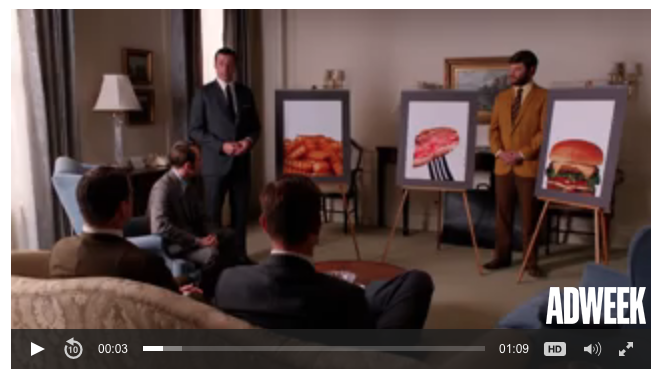
Photo Credit: Pexels.com – Rawpixel.com – CC0 License
Have you ever had a great idea for a marketing campaign that was truly brilliant? Marketers do this sort of thing really well and believe it or not, they enjoy the creative challenge.
But here’s the problem; you’re all jacked-up because you’ve got a great idea. You can’t wait to share it with someone, and who better to tell than your boss. Oops… epic failure. Let me guess, was your idea shot down almost immediately because your boss saw a glimpse of it and said, “We’ve tried that before and it didn’t work.” If that happened to you, the potency of your campaign idea and all the strategic variables of it just lost its pizzazz – ugh! What do you do now?
Don’t let this happen to you.
As a 30-year veteran in both digital agency and corporate marketing, I’ve had plenty of chances to pitch and perfect new campaign ideas to clients and bosses. However, each time I did this I discovered a new way to pitch that was more effective than the last and the variables of the pitch were also different. Both of these pose a challenge for creating a formula for success. I know that I’m not the only person who failed at an idea pitch. But, I have learned from these and figured out there are 5 things you can do to increase the likelihood of your campaign pitch from being shot down the next time you open your mouth in front of your boss, your client or even your peers.
Don’t Tip Your Hand Too Early:
This is probably the most important thing to understand. You’re excited because your idea is awesome and your marketing team has already begun working on briefs, creative mock-ups and narrative options that will be used. Then your boss walks in the room and you say, please take a look at where we are going, it looks great right? Wa-wa… Bad idea.
DON’T DO IT.
Your boss doesn’t understand the entire campaign message and goals and will never be able to wrap their arms around the complexity and magnitude of the campaign at this stage. By tipping your hand early, you shot the rifle and have no bullets left to re-aim and re-shoot. Soon you will back-step trying to defend an idea that doesn’t have enough ammo to get approved and launched.
Do Your Research:
It’s imperative that your campaign is not just a creative mock-up. It needs quality research to show you have your act together. Your research data is part of the building blocks that create a blueprint for a successful campaign.
Don’t skimp on the research. Do as much as you need to help create a potent campaign built on reality, not just creative. This data should communicate why you are doing this, not just the how. Your research should also uncover what your competition is currently doing to target the same customers as you. After a little due-diligence, you will soon find out that your campaign can be crafted through differentiation and not a similar angle as everyone else.
Creative Boards With Copy:
This may sound old-school, but the icons of advertising David Olgilvy and Leo Burnett were both brilliant because they used copywriting and advertising boards to tell a compelling story, and this was done to sell the campaign to their clients. Don’t miss out on this opportunity to create a big splash and put your ideas on adverting boards. It brings everything in the campaign to life, while allowing you to talk about how it will be launched and positioned in the market.
When showing the boards, it’s also critical to talk about the customer and competition and how this will impact them as well. If you’re not sure what a board is; here’s a fun example of an Advertising Creative Board in action in “Mad Men” the movie – source: ADWEEK.

Photo Credit: Adweek.com
Differentiation:
Your creative advertising boards are designed to create a strong visual presence. But they will only accomplish this if differentiation is realistic and displayed in a compelling manner in the ads on the boards. Before you embark on this process, make sure to discuss what those key differentiators are and why your market craves them.
Once you find out what these are, keep your ideas simple and strong and tied to bold creative imagery and similarly tied to a bold headline. If you can figure out a differentiator key message for your campaign and theme that’s compelling and not a re-hash of what your competition is already doing, once your brilliant campaign hits the market, your competition will cringe because they will have a hard time counteracting. Which is one of the goals of a new campaign, to catch your competition off-guard.
Present with Gusto:
Now it’s time to get in front of the big guns at your office. You’ve done all the planning and strategy, the narrative and creative are spot on and the placement is complete. Have confidence in your work, because you know it’s well thought-out and will make a dent in the market. Have some facts ready to use in your presentation like how many businesses are doing this in your industry (if any), the duration of the campaign and rollout plan if it is in stages. You get the idea.
Most of all, talk about how this campaign for your brand will shock the competition and drive consumer confidence and action. Sell it baby. Your confidence at this stage is critical. Without it, you might as well send an email trying to explain your idea.
As you know, no two marketing campaigns are the same. Nobody can tell you with accuracy “we’ve done this before” because your campaign is fully customized based on your research, strategy, timing, content, and placement.
Make sure you explain that right up front before you even start your pitch and then again at the very end. The 5 tips above have been used for decades in creative advertising agencies pitching the largest business in the world. If it worked for them, it will certainly work well for you.
Related Article: The DNA of a Great Business Pitch
Scott MacFarland is a lifelong marketer with a passion for content, marketing, digital, social, web, video, analytics, and all things that lead to successful conversions. Scott is currently the Marketing Director for HMY Yachts in Jupiter, Florida.
Follow Scott on LinkedIn or Twitter
Sources:
https://www.ogilvy.com/about-david-ogilvy/
http://leoburnett.com/ https://en.wikipedia.org/wiki/Leo_Burnett
Mad Men:
https://www.adweek.com/creativity/the-10-best-ads-of-2017/
Related article:
https://www.linkedin.com/pulse/dna-great-business-pitch-scott-macfarland/
Photo Credit: Pexels.com – Rawpixel.com – CC0 License
https://www.pexels.com/photo/man-shaking-hands-with-woman-1081228/
